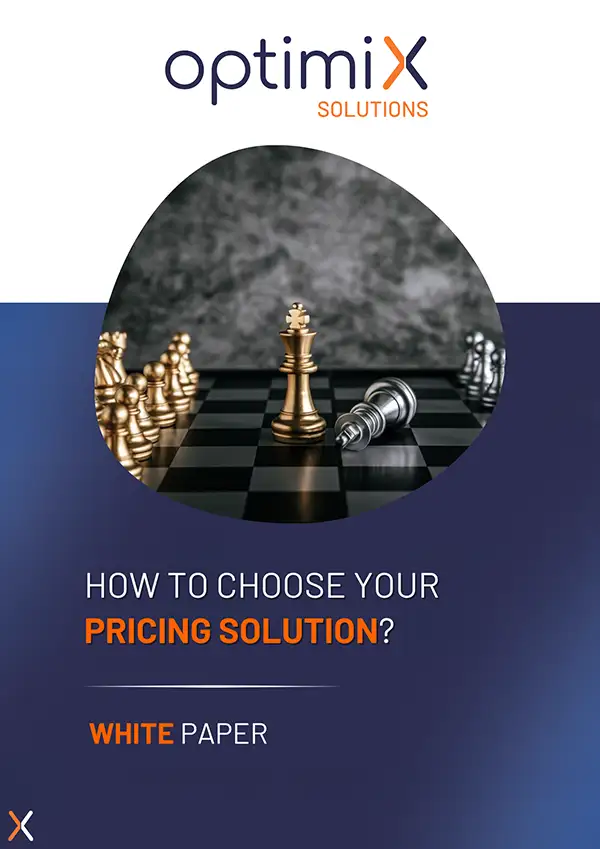If you find yourself considering web crawling and web scraping as interchangeable terms, you’re in the right spot.
The two play very different roles.
In this article, we’ll look at the true nature of these practices, their respective characteristics and how they can be implemented. Above all, we’ll discover the differences between them.
Our aim is that, by the end of this article, you’ll have a better understanding of the roles played by the two techniques.
Understanding Web crawling in pricing
The activity encompasses exhaustive research of the content present within a web page. Commonly referred to as “bots”, “crawlers” or “spiders”, these digital agents meticulously scan every web page.
They meticulously examine URLs, hyperlinks, meta tags and HTML text to extract various data fragments from web pages. This information is then methodically organized and archived.
This process can be compared to mapping a complex network within the Internet. Indexing robots methodically crawl websites to ensure exhaustive coverage. These robots keep track of their explorations of web pages, thus avoiding repeated visits to the same sites.
This method of web exploration is of paramount importance, feeding search engines and data repositories. This simplifies the search for information in the vastness of the web.
Understanding Web Scraping in pricing
The automated extraction of data from publicly accessible Internet sites is known as ” web scraping” . This technique uses specialized software called “web scrapers”, which are designed to focus on specific data sets. Web scraping enables information to be retrieved directly from web pages.
The extracted data is organized into convenient and downloadable formats like Excel spreadsheets, CSV, HTML, JSON, or XML files.
These data sets are used in a variety of applications:
- The comparison,
- Validation,
- Customized analysis.
The automated approach of web scraping not only speeds up data processing, but also improves the quality of the information and the finesse of the data retrieved. It far surpasses the traditional method of manual data collection.
This streamlined methodology proves invaluable across various industries, enabling swift and accurate decision-making.
Case studies
Web crawling
Indexing robots find their main use in search engines, where they play an essential role. Google, Bing, Yahoo, Yandex, as well as major online data aggregators.
They make extensive use of these automated robots to maintain the accuracy of their search results on different websites. As the flow of information generated by the Internet is continuous and gigantic, these robots remain continuously active. They assiduously scan web pages and update their indexes. This guarantees up-to-date search results in every search engine.
Marketplaces use these techniques to monitor and analyze competitors’ product offerings and price quotes.
Companies take advantage of these techniques to gather market intelligence. Thanks to this information, the analysis of opinions on social networks and online forums is simplified. Academic researchers exploit web scraping to collect vast data sets for their studies.
Content aggregators and crawlers bring together a wide range of information. This information comes from many sources, enhancing the user experience.
Web scraping
Web scraping serves a multitude of purposes, finding applications across various domains. From scholarly investigations to business-centric endeavors, its potential is vast.
In academic circles, web scraping is a means of accumulating quantitative and qualitative data . These data enrich research in a number of fields. In particular, it plays an essential role in retail, enabling companies toanalyze their competitors and gain an accurate, real-time picture of the market.
Automated web scraping extracts essential information such as stock specifics, price fluctuations, reviews and emerging trends. All of which contributes to informed pricing decisions.
The benefits of Web crawling and Web scraping in pricing
In all data-intensive activities, web crawling and web scraping play distinct roles. But they are interconnected. Often combined, these techniques offer a valuable aid to information gathering and price surveying.
The benefits of web crawling :
- Faster and more complete: The use of indexing robots enables developers to index pages scanned in their tools faster and more completely. This ensures that no important information escapes developer scrutiny.
- Ensuring regular updates: Data is regularly updated thanks to the automated exploration of pages by these indexing robots. This ensures that any new competitors or new sources of information are not overlooked, so that they can be integrated into future analyses.
- Ensuring Content Excellence : Leveraging a web crawler proves invaluable for evaluating content quality. By automating the assessment, researchers can efficiently gauge the worthiness of information present on the crawled pages.
The benefits of web scraping :
- Unparalleled Accuracy : Web scraping delivers information without any human intervention, guaranteeing that the collected data mirrors the source content with 100% fidelity. This accuracy underpins the reliability of subsequent analyses.
- Improved profitability : manual data collection is labor-intensive and time-consuming. This makes web scraping an attractive alternative. Outsourcing data collection to a scraper translates to substantial savings in staff hours.
- Precise targeting : Web scraping offers a fine-tuned approach to information extraction. Developers can configure their scraping tool to pinpoint specific data:
- Price list,
- images,
- descriptions, saving time, bandwidth and financial resources.
Navigating the challenges of Web Crawling and Web Scraping
What they have in common is a set of challenges that developers need to overcome.
Addressing preventative policies
A significant hurdle that both web crawling and web scraping encounter is the presence of anti-crawling and anti-scraping policies deployed by numerous domains.
These protective measures may result in delays or, in extreme cases, blocking of the IP address.
To get around these obstacles, companies can use proxies. These proxies act as buffers, replacing the user’s real IP address with another, chosen at random from a varied set of IP addresses.
As well as improving the efficiency of data collection through web scraping, this approach protects users’ privacy.
Managing capacity concerns
This requires considerable investment in time and manpower. At the same time, the demand for information retrieval based on these techniques continues to grow, particularly with the rise of web scraping.
Integrating automated solutions into these operations is a strategic choice for preserving the company’s other resources.
In the face of these shared challenges, a proactive stance involving proxy utilization and automation adoption can empower businesses to navigate the complexities of web crawling and scraping more effectively.
----------------------------
The two techniques are distinct processes which, when combined, facilitate automation and improve results.
This harmonious approach proves especially invaluable for industries reliant on data-driven decision-making, such as the Retail sector.
By seamlessly acquiring and harnessing the required information, this methodology empowers businesses to make well-informed choices.
To meet the specific needs of the retail sector, our pricing solution, Optimix Pricing Analytics (XPA), collects data online (via web crawling and web scraping) and in-store using smartphones or handhelds (product photo retrieval and use of AI for EAN code price recognition).








